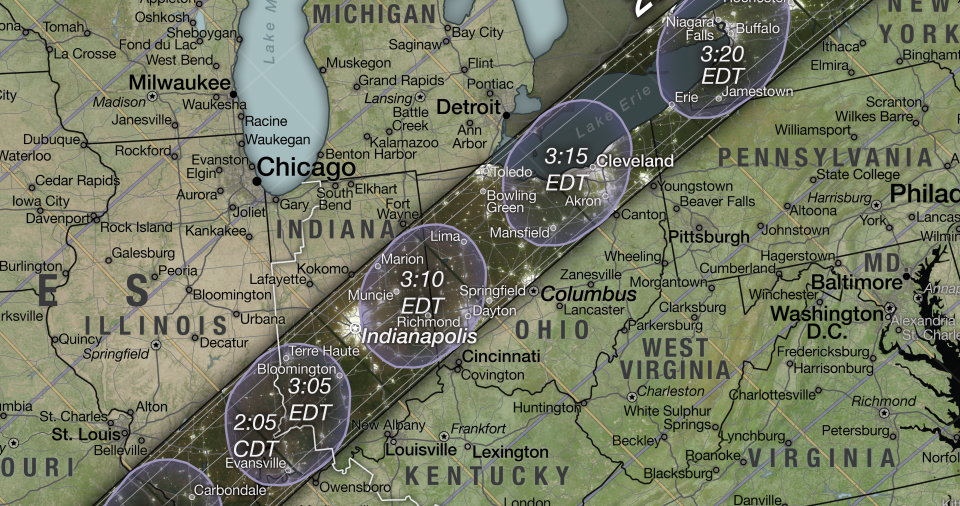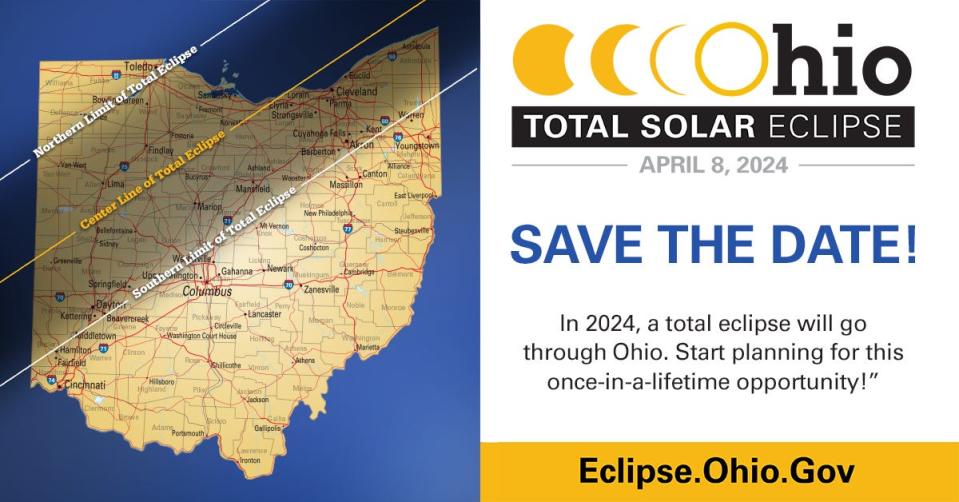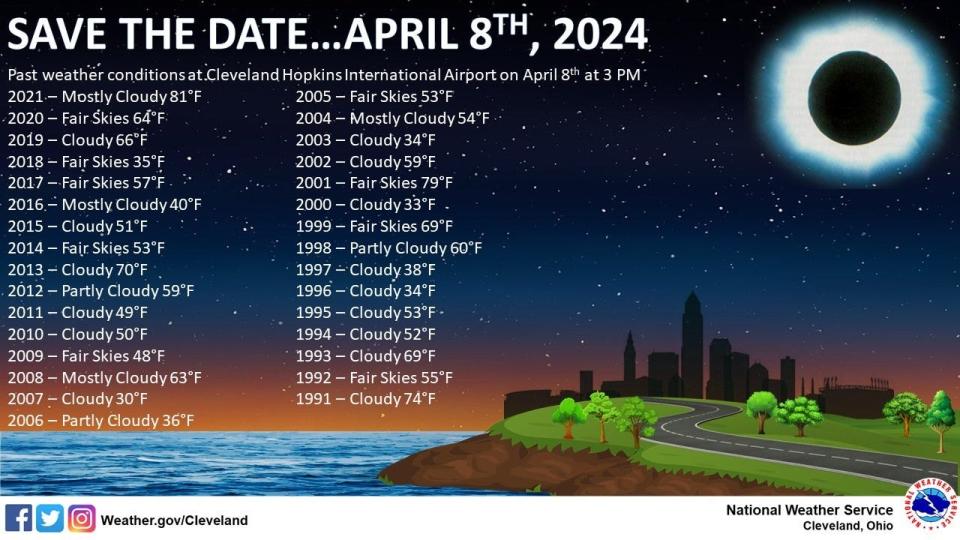The solar eclipse path in 2024 will go through Ohio. Here's what to know
One year from Saturday, Ohioans will be able to witness a once-in-a-lifetime event.
On Monday, April 8, 2024, residents will be able to view a total solar eclipse, the first time this will happen in Ohio in hundreds of years. It will pass through cities like Cleveland, Akron and just outside Columbus. During the eclipse, the moon will completely block out the sun, casting a shadow on Earth.
Here are five things you need to know about the total solar eclipse in 2024.
Where will the total solar eclipse be visible in Ohio? See the map

People within a 124-mile-wide band in Ohio will experience the rare total solar eclipse. The path of totality will cross the state from southwest to northeast, passing through cities such as Akron, Toledo, Bowling Green, Lima, Mansfield, Cleveland, Springfield and Dayton. The total eclipse will last for approximately three minutes and 40 seconds.
A map from NASA's Scientific Visualization Studio also shows the location and shape of the moon's shadow during the eclipse, with the shadow over Dayton and Lima, for instance, at 3:10 p.m. and over Akron and Cleveland at 3:15 p.m.

Will you be able to see the solar eclipse in Greater Akron?
Yes. Northeast Ohio is in the direct path of the eclipse.
The moon will be relatively closer to Earth during the eclipse, which will make it look larger and last longer. However, since Columbus is outside of the path of totality, the moon will not completely block out the sun. Instead, viewers will see a partial eclipse, with the moon covering a portion of the sun's disk. The sun will become about 99% obscured in Columbus during the peak of the eclipse.
Meteor showers, supermoons and more: 10 astronomical events to look for in 2023
When was the last time a total eclipse was visible in Ohio?
The 2024 eclipse will be the first time in over 200 years that people in Ohio will be able to see a total solar eclipse.
On average, a total solar eclipse occurs somewhere on Earth every 1.5 years. However, only 21 total solar eclipses have crossed the lower 48 states in the entire existence of the United States. The last total solar eclipse visible in Ohio was in 1806. The next in Ohio will be in 2099.
Where can you attend solar eclipse viewing parties locally?
The Great Lakes Science Center in Cleveland will be holding the Total Eclipse Festival. It even has a countdown clock on its site.
The state of Ohio has the website eclipse.ohio.gov with information including public parks and recreational areas that would be good for viewing the eclipse.
Events in Greater Akron will be announced in the coming months.

What's the weather going to be like?
Sunny and 70 degrees.
Who are we kidding? This is Northeast Ohio, so it could be warm and sunny and cold and snowy all in the same day.
The National Weather Service took a look at weather conditions at its Cleveland office on April 8 since 1991 and it's been a mixed bag.
It has been cloudy at 3 p.m. when the eclipse will occur 19 times and viewing-friendly 12 times in that span.
Will I need glasses to view the eclipse?
You may already be aware if this isn't your first eclipse, but you will need glasses to view this phenomenon.
Special eclipse glasses are necessary to filter out the harmful ultraviolet and infrared light from the sun. Eclipse glasses can be purchased at many stores or can be ordered online. The eclipse can also be viewed through telescopes, binoculars and cameras with solar filters and pinholes, or similar projection methods.
It is never safe to look directly at the sun, even during a partial eclipse. This also applies during a total eclipse up until the sun is completely blocked, so it will be important to know when to take off and put back glasses.
Reach reporter Taijuan Moorman at tmoorman@dispatch.com. On Twitter: @taijuannichole
This article originally appeared on The Columbus Dispatch: Solar eclipse path in 2024 will pass through Northeast Ohio

